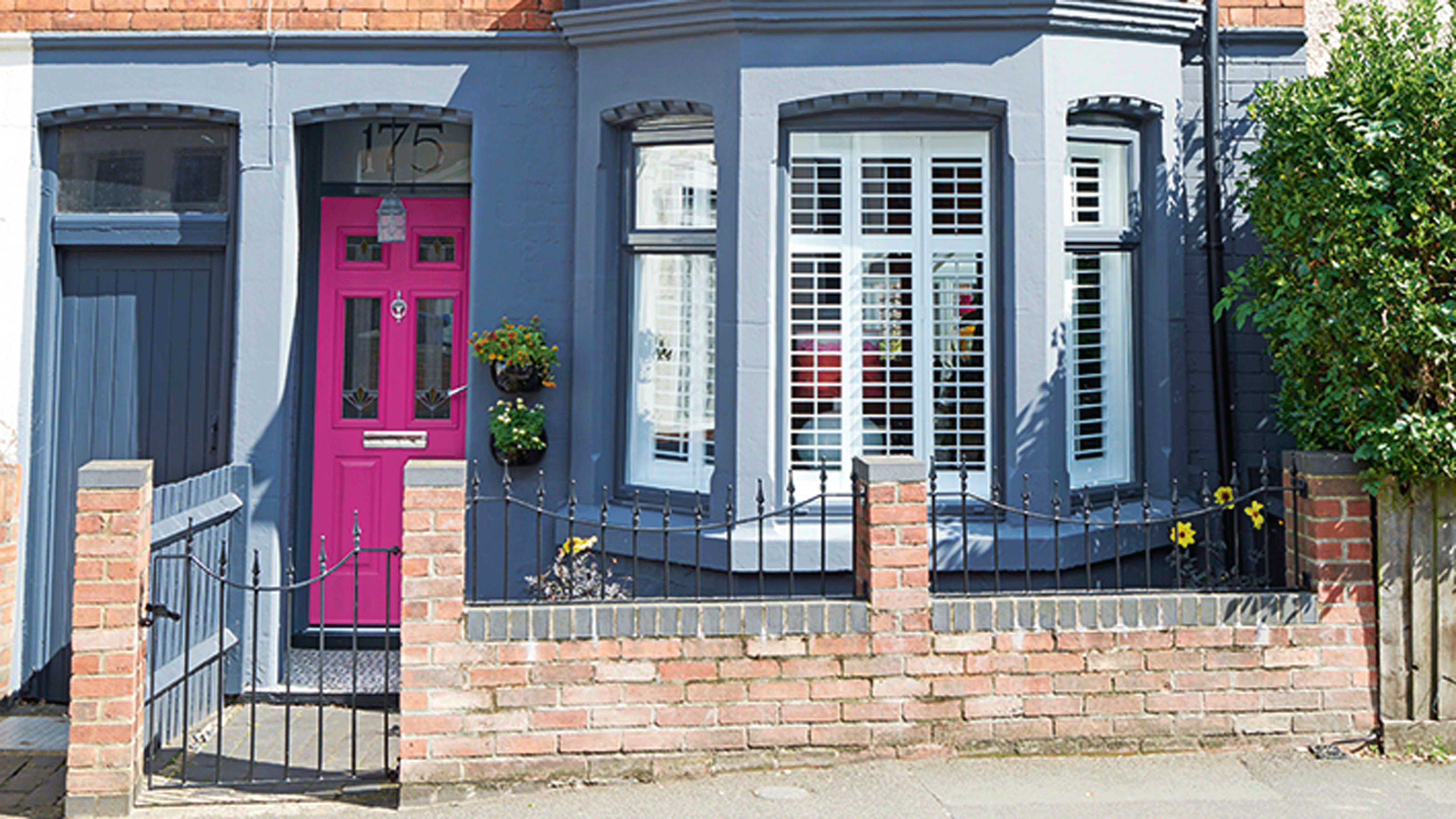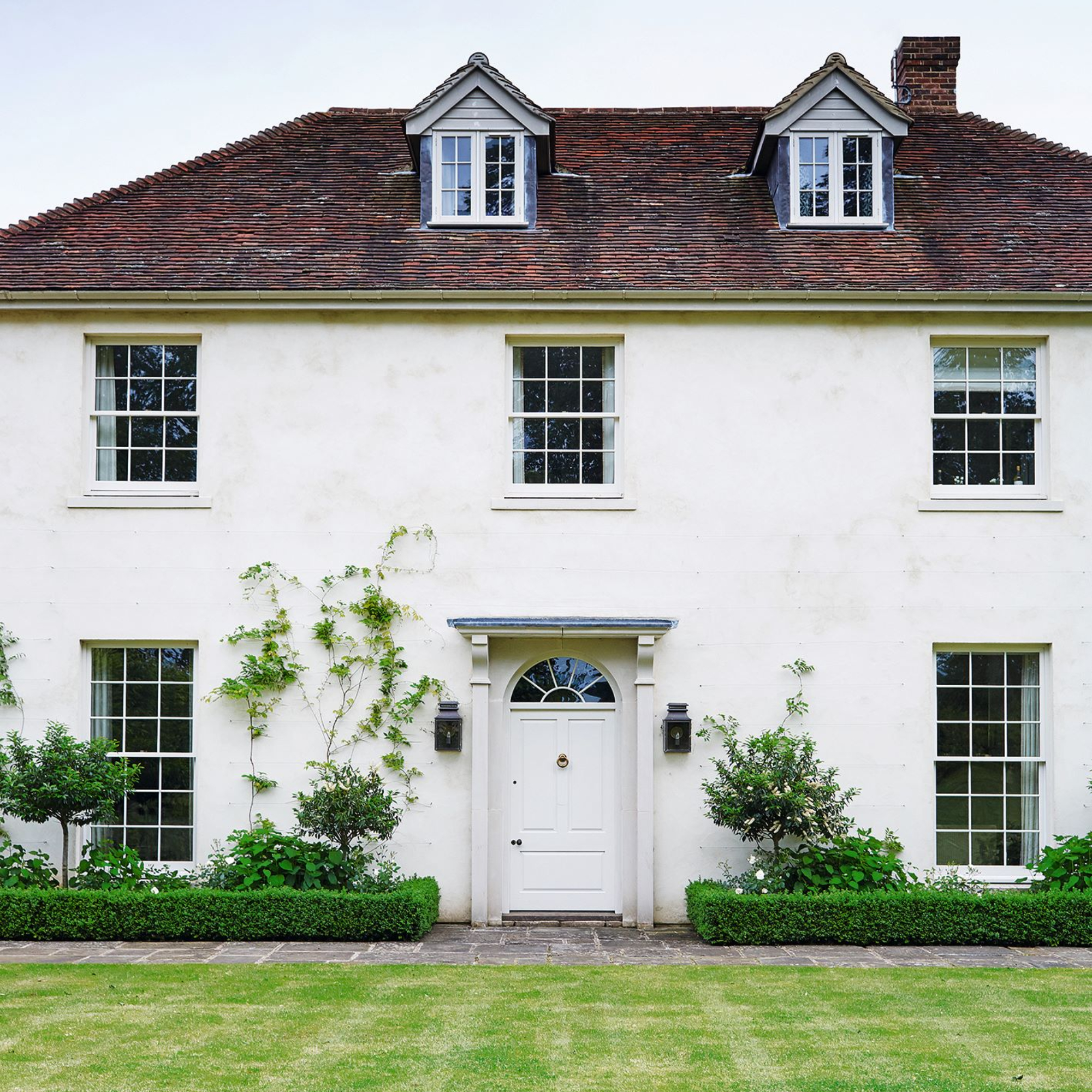How often should you paint your home’s exterior? Signs your house might be due a repaint
The expert timeline to help you keep on top of your repainting schedule

As we finally leave behind the washout that marked the start of spring and embrace brighter days on the horizon, you might feel inspired to revive the outside of your house with a fresh lick of paint. But how often should you paint your home’s exterior?
Occasional touch-ups of exterior paint are to be expected, particularly after the harsh, stormy weather of the last few winters. However, a complete top-to-bottom repaint is a big project that no one wants to do more than is strictly necessary. But it’s important not to put off repainting your home’s exterior for too long as you could then be left with a bigger task having to tackle excess flaky, worn-out paint.
Similar to giving your garden a refresh and trying out some new front door ideas, keeping your home’s exterior paint pristine will have a serious impact on its kerb appeal.
How often should you paint your home’s exterior?
A crisp, freshly painted exterior can transform the look of your home, but after a few years, signs of wear can creep in. That’s why regular maintenance is key. You should check your house exterior for signs of wear and tear every couple of months to help you work out when you'll need to repaint
Mapping out a timeline to keep on top of repainting will maximise the look of your home for years to come. So, whether you’re an exterior painter newbie thinking of giving it a try for the first time or you’re a painting aficionado, we’re here to give you a thorough breakdown of how often you should paint your home’s exterior.

What determines how often you need to paint a house exterior?
There are many factors that come into play when it comes to exterior home painting timelines, but Rachael Doyle, spokesperson for Wetherby Building Systems, shares the main three to give us a rough idea;
- Material of your house: Stucco, for example, might need repainting more frequently than other materials like brick.
- Paint quality: Higher quality paints tend to last longer.
- Weather conditions: Houses near the coast and exposed to harsh sun and salty air might need repainting every 2-3 years, whereas houses inland can last 5-10 years.
As Rachael mentioned, the average home should get a good 5 years minimum, 10 years maximum out of a well-prepped and painted exterior. However, even things you’d never considered, such as having a penchant for being the hostess with the mostest and holding frequent summer garden parties could impact the repaint timescale.
Sign up to our newsletter for style inspiration, real homes, project and garden advice and shopping know-how
Ben Thomson, manager at paint distributer Promain tells us, ‘You also need to consider environmental factors outside of the weather or climate, such as how often you host barbecues or start fires in the garden. Excess smoke can taint or discolour your exterior over time, potentially resulting in more frequent repainting sessions.’

What are the signs that a house needs repainting?
‘Visually, it’s quite clear when painting is needed,’ Becky Rackstraw, director at Protek tells us, such as when ‘flaking occurs on existing wall paint, can look dull overall, or have areas of algae or mould. Or simply be crying out for a fresh new look.’
Your choice of exterior paints and finishes can impact how quickly signs of wear show, for example, the need for repainting may be more apparent if your home is painted a deep tone like dark grey, navy, or black. Flaking paint can be more conspicuous on these shades, particularly when covering a lighter colour beneath the dark paint. Darker colours can also show fade spots from areas that have endured a lot of sun exposure over the summer months than lighter tones.
FAQs
What can change your paint’s lifespan?
Since we, unfortunately, can’t control the elements, maximising the life of your exterior paint often comes down to two key things; ‘Careful preparation and a good quality paint that is applied correctly,’ Becky from Protek explains.
The prep involved is dependent on the surface of your exterior. According to Becky, ‘If painting over an older surface, make sure it’s dry, clean and in good repair – wire brushes or sandpaper can be used and check if fillers are needed for cracks.’ And pay close attention to other issues, ‘Ensure that any dust, mould, algae or moss has been removed and any rust has been sanded down,’ she also explains.
The colour of the surface you’re painting over comes into play when prepping correctly too, ‘If painting over a strong or dark colour, with a new lighter colour, consider a primer or undercoat to ensure both the best finish and that your paint job lasts for as long as possible,’ Becky tells us. And the final step she suggests is to, ‘Apply a high-quality paint designed for exterior use – a mould-resistant product should be used.’
Do you need to repaint the exterior of your home all in one go?
Redoing the paint on the entire exterior of your home is a big job, especially if multiple coats are required. So if you notice signs of wear on one specific wall, will you have to paint the entire house to get the best result or can you get away with only doing the walls that really need it? Ben from Promain says doing the full job in one go can be avoided, ‘Repainting your home exterior all at once generally isn’t necessary. I recommend repainting your exterior in sections, based on the condition of the existing paint across the various different areas.’